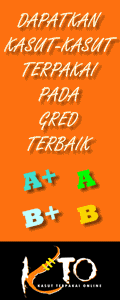Istilah Kecederaan Kaki Yang Biasa Di Alami Oleh Pemain Bolasepak
Posted by pahaikan on Tuesday, February 7, 2012 Under: Perubatan

Wayne Rooney pernah mengalami keretakan metatarsal semasa perlawanan dengan Chelsea pada Mei 2006. (Rujukan kes)
Mana-mana pemain bolasepak sama ada yang bermain untuk peringkat sekolah atau di kelab ternama, terdedah kepada kecederaan kaki. Ada kecederaan yang akan mengakibatkan kesan jangka pendek dan jangka panjang. Yang jangka panjang ni biasanya akan menyebabkan orang "gantung kasut".
Sememangnya kaki adalah aset utama bagi seorang pemain bolasepak. Tidak hairanlah Pasukan Real Madrid sanggup meng"insurans"kan kaki Cristiano Ronaldo sebanyak 90 juta pound, berbanding harga perpindahan CR dari Manchester United iaitu 80 juta pound. (Mail Online, 04 Aug 2009)
Fokus entri ini ialah istilah atau nama kecederaan kaki yang biasa dialami oleh pemain bolasepak. Sekurang-kurangnya, kita pun tahu sama ada kecederaan tersebut teruk atau tidak. Tapi, semua maklumat ini hanya di"copy" direct dari laman web About.com. Hanya dalam Bahasa Inggeris sahaja... Terpaksalah translate sendiri kalau tidak faham...

Struktur tulang kaki...
------------------------------------------------------
Ankle Sprains
The most common of all ankle injuries, an ankle sprain occurs when there is a stretching and tearing of ligaments surrounding the ankle joint.
Achilles Tendonitis
Achilles tendonitis is a chronic injury that occurs primarily from overuse and it felt as pain in back of the ankle. If this is ignored it may increase your risk of Achilles Tendon Rupture.
Concussion
A concussion occurs with a sudden impact or blow to the head.
Groin Pull
A groin (adductor) pull or strain occurs when the muscles of the inner thigh are stretched beyond their limits.
Hamstring Pull, Tear, or Strain
Hamstring injuries are common among runners and can range from minor strains to total rupture of the muscle at the back of the thigh.
Iliotibial Band Syndrome
IT band friction syndrome often results in knee pain that is generally felt on the outside (lateral) aspect of the knee or lower.

Nama-nama otot pada kaki..
Muscle Cramps
A cramp is a sudden, intense pain caused by a muscle involuntary and forcibly contracting muscle that does not relax. Similar to, but not the same as a Side Stitch.
Blisters
Blisters are fluid-filled sacks on the surface of the skin that commonly occurs on the hands, or the feet.
Delayed-Onset Muscle Soreness
Also called "DOMS," this muscle pain, stiffness or soreness occurs 24-48 hours after particularly intense exercise or a new program.
Patellofemoral Pain Syndrome
This term usually refers to pain under and around the knee cap It is also called "Runner's Knee."
Plantar Fasciitis
Plantar fasciitis is the most common cause of pain on the bottom of the heel and usually defined by pain during the first steps of the morning
Pulled or Strained Calf Muscle
Calf strain occurs when part of the muscles of the lower leg (gastrocnemius or soleus) are pulled from the Achilles tendon. It is similar to an Achilles tendon rupture, but occurs higher up in the back of the leg.
Shin Splints
Shin Splints describes a variety of generalized pain that occurs in the front of the lower leg along the tibia (shin bone). Shin Splints are considered a cumulative stress injury.
Sprains and Strains
These are acute injuries that vary in severity but usually result in pain, swelling, bruising, and loss of the ability to move and use the joint.
Stress Fractures
Stress fractures in the leg are often the result of overuse or repeated impacts on a hard surface.
Tendinitis and Ruptured Tendon
Tendinitis is simply inflammation of a tendon. It generally occurs from overuse, but can also occur from a forceful contraction that causes microtears in the muscle fibers. These tears can lead to weakness and inflammation.
Knee Injuries Common in Soccer Players
Anterior Cruciate Lligament (ACL) and posterior cruciate ligament (PCL) injuries
Medial Collateral Ligament (MCL) and lateral collateral ligament (LCL) injuries
Cruciate ligament injuries don't always cause pain, but typically cause a loud "pop." Most of these injuries are confirmed with an MRI. Arthroscopic surgery is sometimes the best way to find a partial tear.
Torn Knee Cartilage (Meniscus Injuries)
Torn knee cartilage is usually a torn meniscus. These small, "c" shaped pieces of cartilage act as cushions between the thigh bone (femur) and the tibia (shin bone). Meniscus tears are often the result of twisting, pivoting, decelerating, or a sudden impact. It cam be identified by various manual tests a physician can perform to detect torn cartilage.
Credit to: http://sportsmedicine.about.com/od/soccerinjuries/a/soccerinjury.htm

Yang ni nampak macam patah...
CATATAN: Kadang-kadang pemain bolasepak cedera di tangan juga...
In : Perubatan
Tags: "kecederaan kaki pemain bolasepak"
blog comments powered by Disqus












